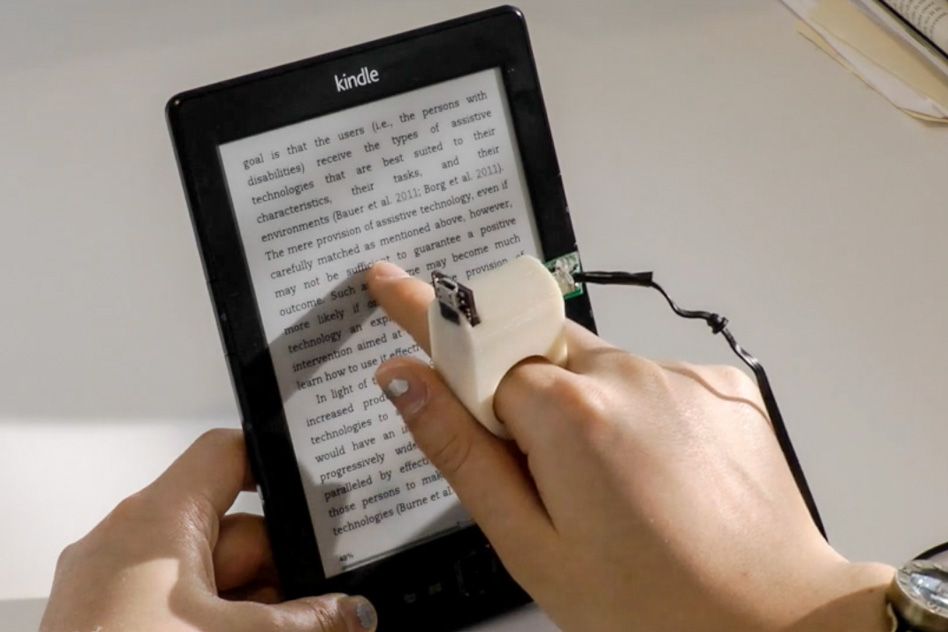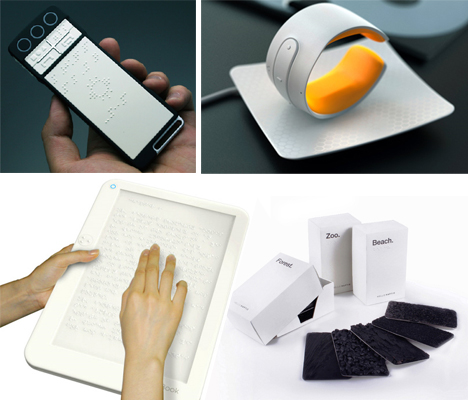Screen Readers for the Blind: Accessing Content Without Barriers
Screen Readers for the Blind: Accessing Content Without Barriers
Blog Article
Discover Cutting-edge Devices Created for the Visually Impaired
The development of ingenious devices for the aesthetically impaired represents a considerable improvement in accessibility and independence. Technologies such as clever glasses with AI capacities and mobile applications created to supply acoustic summaries are improving daily experiences for individuals.
Smart Glasses for Navigating

Smart glasses made for navigation are revolutionizing the means aesthetically impaired individuals engage with their setting. These innovative devices utilize a mix of electronic camera innovation, expert system, and auditory feedback to offer real-time information regarding environments. By using challenge detection systems, smart glasses can inform users to possible hazards, making it possible for more secure mobility in both strange and familiar settings.
The integration of GPS innovation further improves navigation capabilities, permitting users to get auditory directions as they move. This hands-free method not only fosters freedom yet likewise encourages aesthetically impaired individuals to navigate city landscapes with increased self-confidence. Additionally, many smart glasses are geared up with functions that identify spots and street indicators, providing contextual details that boosts the individual experience.
Furthermore, the advancement of these gadgets is consistently advancing, with firms working to enhance the precision of things acknowledgment and broaden the array of navigational features. As smart glasses end up being a lot more accessible and budget-friendly, they hold the possible to considerably transform day-to-day life for visually impaired customers. Eventually, these cutting-edge devices stand for a critical action toward inclusivity, offering improved flexibility and a higher sense of autonomy for people navigating the world around them.

Mobile Application for Daily Living
Exactly how can mobile applications improve the daily lives of visually damaged people? Mobile apps are revolutionizing the method aesthetically impaired users browse their environments, manage daily tasks, and accessibility information. These applications offer essential assistance through numerous capabilities, fostering freedom and enhancing lifestyle.
A number of ingenious mobile apps are designed particularly for everyday living. Apps like Be My Eyes attach visually damaged individuals with sighted volunteers through video telephone calls, allowing them to obtain real-time support with jobs such as reading labels or navigating unknown areas. In A Similar Way, Seeing AI, established by Microsoft, utilizes synthetic knowledge to define environments, read message, and identify items, efficiently changing a mobile phone into an effective tool for everyday support.
Additionally, navigating apps tailored for the visually damaged, such as Aira and BlindSquare, provide audio-based directions and ecological info, allowing individuals to traverse their surroundings securely and confidently. Past navigating and instant aid, mobile apps also sustain company and task administration, with attributes that aid users set reminders, produce order of business, and track visits. In summary, mobile applications offer as crucial sources, equipping visually impaired individuals to lead more independent and meeting lives.
Wearable Technologies for Support
Empowerment through modern technology is progressively noticeable in the world of wearable devices created to help aesthetically impaired individuals. These innovative devices incorporate flawlessly right into life, improving navigating and supplying necessary responses to individuals. Clever glasses geared up with video cameras can review and recognize faces text aloud, enabling users to connect even more with confidence in social and specialist setups.
Another remarkable innovation is using haptic comments systems in wearable tools. These systems utilize resonances or various other tactile signals to communicate information about the individual's setting, such as obstacles or modifications in surface, boosting mobility and security. Wearable innovations additionally consist of wristbands that connect to smartphones, notifying customers to notifications via refined vibrations, thus improving connection without dependence on visual cues.
As these innovations remain to develop, they are not just boosting independence for visually impaired people but additionally cultivating a better feeling of incorporation in society. By linking the space between challenges encountered in everyday living and the potential for autonomy, wearable modern technologies act as pivotal devices in the mission for equal rights and empowerment for those with visual problems.
Sound Summary Tools
Audio description devices play an important role in improving ease of access for visually impaired people, giving them with the ability to engage with aesthetic media. Smart glasses for the visually impaired. These devices use narrated summaries of vital visual elements in films, television shows, and live performances, guaranteeing that users can fully comprehend the context and emotions communicated via visuals
Sound summary can be incorporated into numerous systems, including streaming solutions, cinema screenings, and live movie theater. Many prominent streaming solutions currently consist of audio summary as an accessibility attribute, enabling visitors to pick it easily. In enhancement to traditional media, specialized apps additionally exist, supplying audio summaries for art events, museums, and other cultural occasions.
The effectiveness of audio summary rests on the ability of the narrators, who should share visual details succinctly without diminishing the initial audio. Technologies in this area are likewise leading index the way for more personalized experiences, where individuals can readjust the degree of information and pacing according to their choices.
Braille Innovations and Instruments
Braille devices and developments have significantly transformed the means visually damaged individuals communicate with text and details. Modern improvements have led to the development of functional devices that improve literacy and self-reliance among customers.
In addition, portable Braille notetakers Read Full Article combine traditional Braille input with modern-day capabilities, helping with note-taking, organizing, and file editing and enhancing on the move. Voice-activated assistive devices. These portable devices often include text-to-speech abilities, connecting the gap between Braille and auditory details
On top of that, cutting-edge Braille printers have emerged, permitting individuals to produce Braille labels, records, and academic materials efficiently. This ease of access promotes better engagement in academic and professional atmospheres, ultimately promoting inclusivity.
Additionally, research study right into wise Braille modern technologies continues to increase. Tools that incorporate artificial knowledge are being discovered to supply real-time navigating support and contextual info, boosting the user experience in diverse setups. Generally, these advancements mirror a commitment to equipping aesthetically impaired people through modern technology, guaranteeing they can conveniently gain access to and involve with the world around them.

Verdict
The development of cutting-edge tools for the aesthetically damaged considerably enhances independence and top quality of life. These innovations not only foster greater inclusion however additionally promote autonomy in everyday activities, inevitably contributing to a more available and fair society for visually impaired individuals.
As smart glasses become extra inexpensive and available, they hold the possible to substantially transform everyday life for aesthetically damaged users. Mobile apps are changing the method visually damaged individuals browse their atmospheres, take care of daily jobs, and access details. Apps like Be My Eyes link visually impaired customers with sighted volunteers via video clip calls, go enabling them to obtain real-time aid with jobs such as checking out labels or navigating unknown spaces.Additionally, navigating apps tailored for the aesthetically impaired, such as Aira and BlindSquare, offer audio-based instructions and environmental info, making it possible for individuals to traverse their environments securely and confidently.The innovation of ingenious devices for the aesthetically damaged substantially improves independence and quality of life.
Report this page